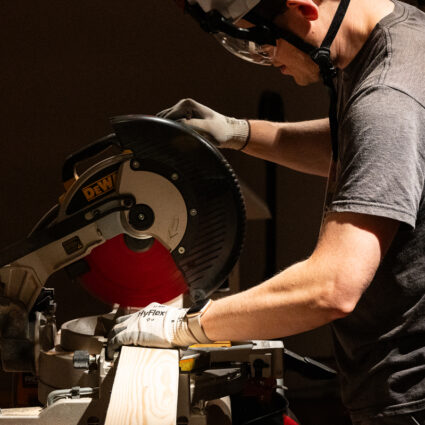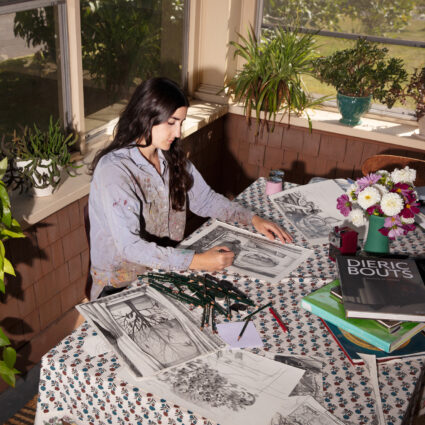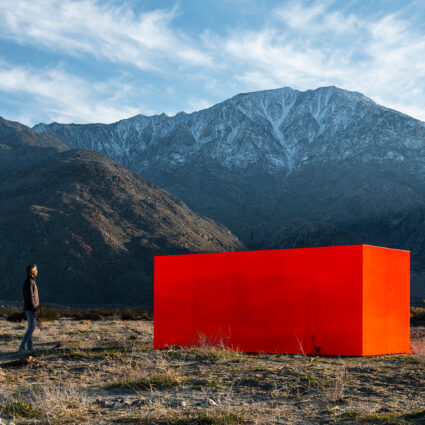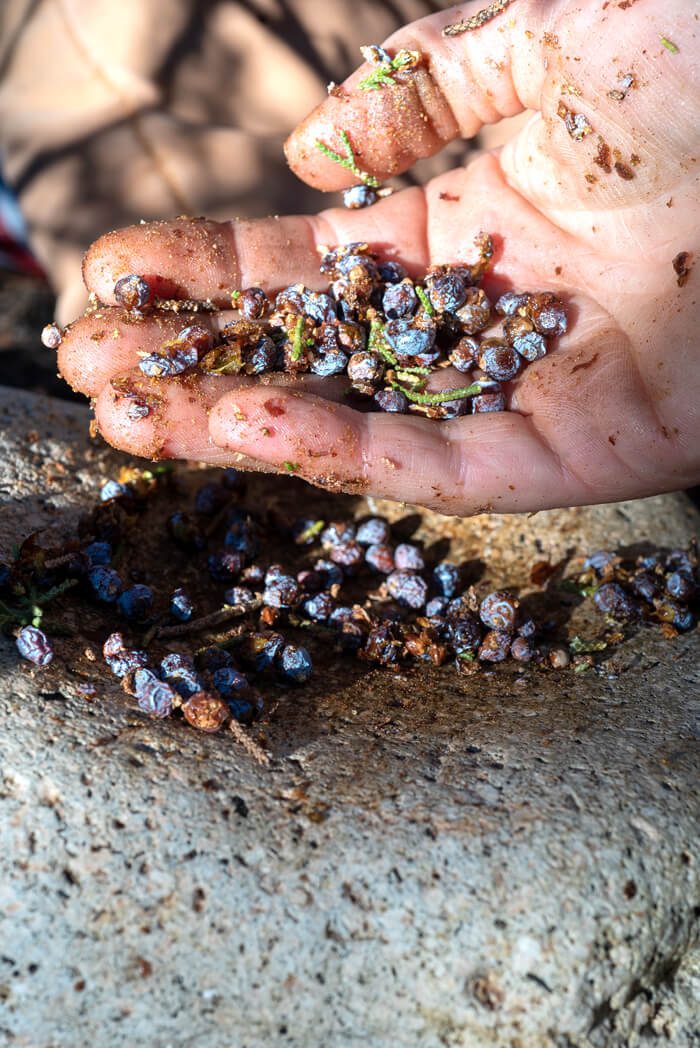
Craft is alive and well in New Mexico. The home of Pueblo pottery and colorful Diné tapestry, this part of the world has a heritage of craft and design that continues to inspire artisans to practice old trades or create something entirely new. Often some mixture of the two.
These are just a few of the craftspeople in New Mexico who are creating one-of-a-kind goods by hand. You can find all of them on Instagram and at local markets.
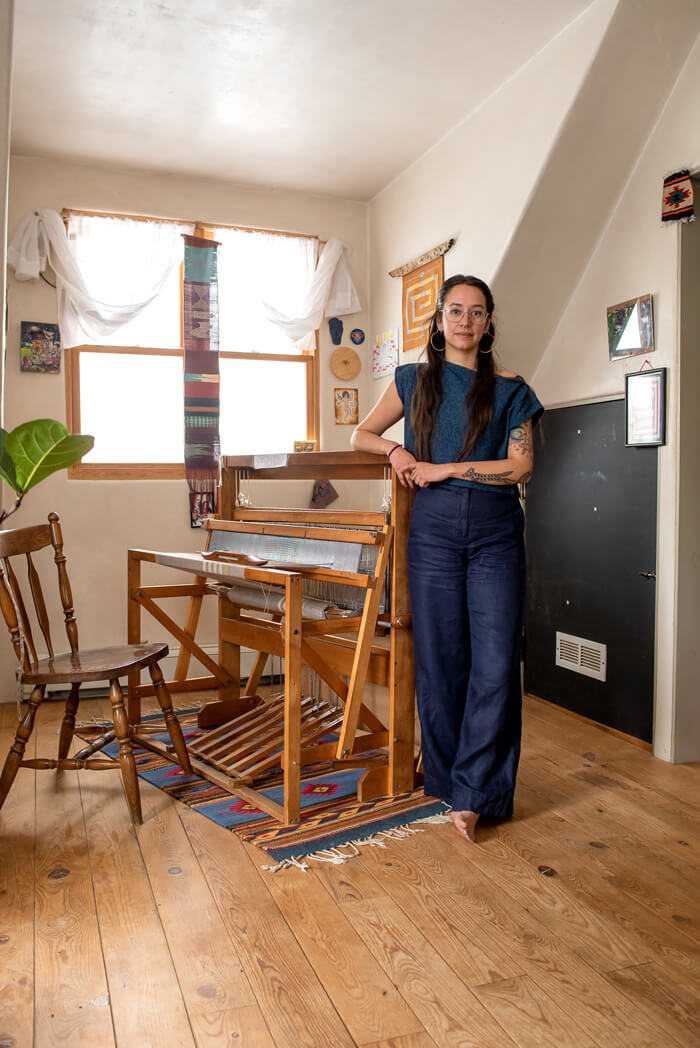
Christine Hernandez, Lil Weavy
Weaving is an artform that requires patience in spades, as Christine Hernandez well knows. Thankfully, she enjoys the slowness and calm of the process. As Lil Weavy, she creates one-of-a-kind tapestries and clothing in Santa Fe and Chimayo.
When did you realize that weaving was what you wanted to do?
In 2015, when I was twenty-six or twenty-seven. You know when you’re just waiting for that one passion to be revealed to you? I’ve always dabbled in a bunch of things. I like creating art, and I’ve always made things, but when I started weaving it was just so sweet and lovely. And all the people in the weaving department [at the Southwest School of Art], at least eighty percent, were older women. Everyone is really slow and sweet and able to untangle things in a really graceful way. In a metaphorical way and a literal way! A woman there gave me a loom at the end of the semester. She said she was upgrading and had an old loom to give me. Another woman gave me boxes full of yarn. It was almost like the higher powers were saying, “Cool, you’ve found it. Now let us help you stay in this craft.” It was amazing. And it still is.
What brought you out to New Mexico [from San Antonio, Hernandez’s hometown]?
One of my good friends from San Antonio moved out here a few years ago. So I had been visiting a lot, and I knew that Santa Fe was a really magical place in the summer. I visited Chimayo [where Hernandez apprentices with master weaver Irvin Trujillo] on one of those trips and just fell in love.
What does a typical week look like for you?
I come into town a couple days a week and do production weaving for a lady in town who has a shop in the Loretto Hotel. I weave her designs and get paid hourly. I’m sort of at the point where I want to step back from that and put the energy into myself, because I haven’t woven anything on my loom at home in months and it’s sort of sad. But it’s nice to know I have that steady income. I do that two days a week, and then I go out to Chimayo another two days a week. And I weave over there—we were doing a lot of dyeing this summer, using natural dyes. I think Irvin’s going to stop now that the first freeze has come, though.
View more images of Christine Hernandez here.

Percy Stith, The Stith Collection
At the turn of the previous century, says Percy Stith, wearing a hat “wasn’t the trendy thing, it was just the thing you did.” He has a vision of that being the case again. And with his idea of making hat-making (or millinery, if you’re fancy) an accessible craft for everyone, that vision just might become a reality.
How did you start making hats?
I lost my favorite hat, an old Stetson. I went [to the hat shop] downtown [Santa Fe], and I had pictures of me wearing it—I knew exactly what it was. I talked to the guy about it, and he said, “It’ll be thirteen hundred dollars.” And I saw a lady there making a hat… When I was young, I lived in New York City after college, and I met this woman, and two weeks later we flew to Vegas and got married. She was a hat-maker. We were only married for about six months, but in those six months, every day I would leave my job at five pm on the button and walk over to the hat shop where she worked and sit and wait for her. And after about two months of waiting, she made me a hat. And then, the next month, I started making a hat. I probably made three hats—this was about a dozen years ago. And when I saw that lady making a hat downtown, it was a flashback moment, and I thought, “Oh, right, I can make a hat.” I wasn’t one hundred percent sure, but for thirteen hundred dollars, I figured I could give it a try. So I bought some things, and I made a few hats.
How did you find this location? A shop right on Canyon Road [in Santa Fe] is really ideal.
It just kind of fell into place. My goal was to open a hat shop where people make their own hats. Kind of integrate more tech into making hats. We’d 3D scan your head, design your hat block on the computer, then 3D print your hat block, then you do some of the labor. That’s still kind of my goal. But to do that, you need 3D scanners and printers, which cost a little bit of money. And then somebody was like, “Well, Percy, why don’t you just open a hat shop to begin with? Version 1.0.” And that’s kind of what I did.
View more images of Percy Stith here.
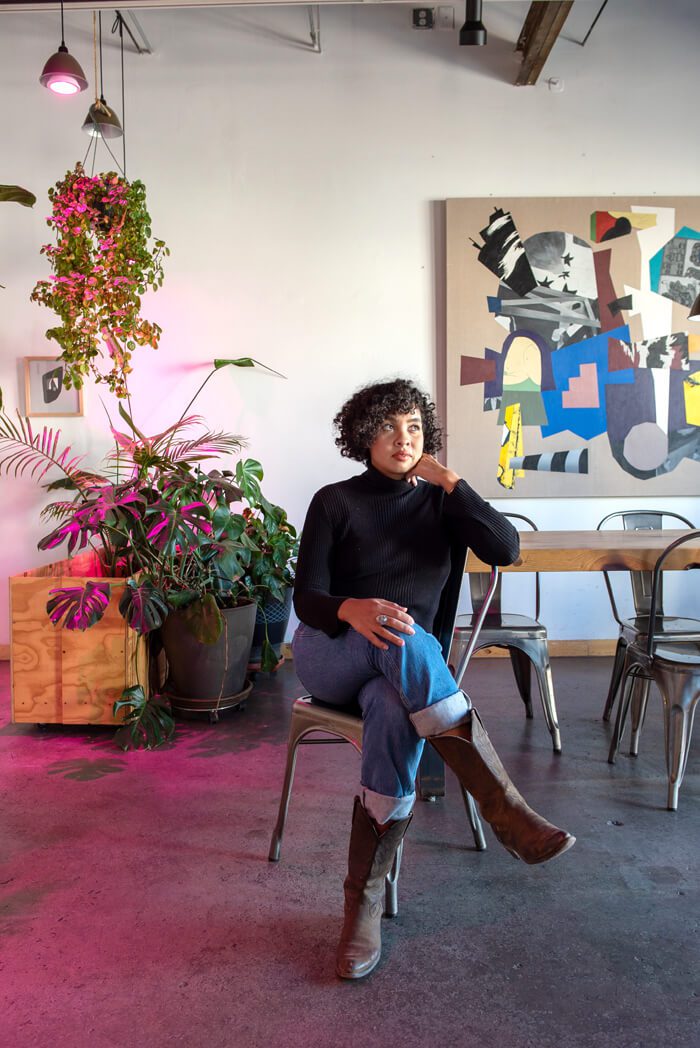
Monique Carr, Spellbound Syrups
Monique Carr first started making drink syrups in 2015 as a hobby. Now as Spellbound Syrups, she makes her botanical syrups, which are usually mixed with soda water for a refreshing drink, largely from locally sourced fruit and herbs. Some of her flavors are predictable for Albuquerque—she regularly makes prickly pear and apricot syrups—but other flavors display a more esoteric side of the New Mexico foodshed: in the past several months, she’s made syrups from ground cherry, persimmon, and nasturtium blossoms.
How do you make your syrups?
Each one is just three ingredients: fruit, apple cider vinegar, and organic sugar. Everything is raw, not cooked. So there’s the yeast on the fruit and the yeast in the vinegar, and one of them makes a byproduct that interacts with the other. They stall out before they carbonate much, or before there’s any real alcohol content.
Where do you get your ingredients?
These days, people will reach out to me and say, “Hey, I live on an orchard,” or “I have a fruit tree with way more fruit than I know what to do with,” or something. Instagram is so amazing, because it connects you to people in your area; I’ve made so many great connections that way.
The great thing about Albuquerque is that at least eight months of the year, you can be growing and processing fruits and vegetables. I just picked a bunch of jujubes. I was gifted some golden apples. I recently picked a bunch of blue plums. A friend at work gave me some persimmons from his neighbor’s tree. Apricots did so well this year.
Where do you sell your syrups? Where can people buy your drinks?
My main accounts are with Zendo, Sister Bar, and Still Spirits [in Albuquerque]. Right now, Zendo (both the original location on Second and the El Vado location) has a fig and mandarin shrub, Sister Bar has honeydew, and Still Spirits has the fig and mandarin, too. They’re making a really nice gin drink with it. It’s rosy and beautiful, and it’s garnished with juniper berries. I also do a lot of one-off events, like pop-up markets.
View more images of Monique Carr here.
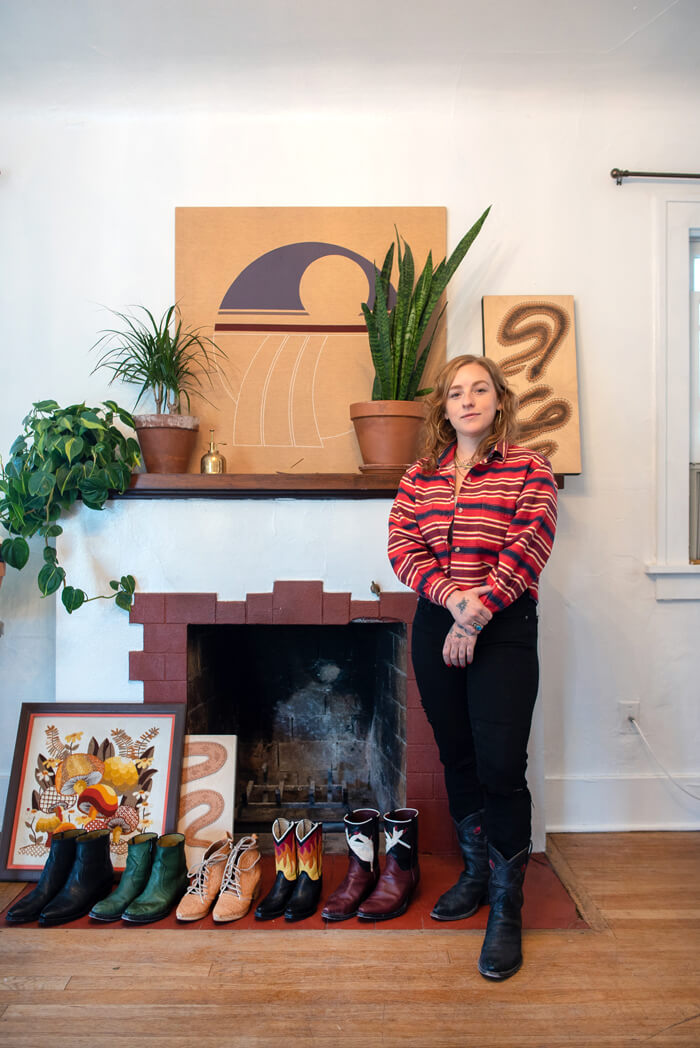
Murphy Thiel, Run and Hide Leather
Under the name Run and Hide Leather, Murphy Thiel makes custom cowboy boots and other leather goods entirely by hand out of a studio in Albuquerque’s South Valley. She is one of very few women bootmakers in the country. She hopes to open her own studio and storefront sometime next year.
How did you start Run and Hide?
I went to school for menswear design in New York. I originally wanted to be a tailor, which is crazy because now the thought of doing that is kind of repulsive to me. I ended up working for this company in New York that made motorcycle jackets, this really cool punk label, right out of college. I really fell in love with leather. I went back to school for footwear and accessory design and kept working for big companies—I worked for Rag & Bone for a while. Then I thought, “God, I don’t want to work for big companies forever.” It was not hands-on at all. I was sitting in front of a computer all day, and it was soul-crushing. So I was making it in New York but still miserable. So then I went through a slew of working for small designers and eventually got the idea to start making things myself. So I started making this clog line, which was kind of the birth of Run and Hide, about five years ago.
How did you wind up in Albuquerque?
I was making these clogs out of a studio in New York, and eventually I thought, “I could keep doing this, keep making the clogs and small stuff, or I could go learn from a master.” Because that’s really the only way you can learn that stuff [bootmaking]. Which is crazy. They don’t really teach this stuff in school.
So I looked up this list of bootmakers and emailed all of them. I looked at the towns they lived in. It got boiled down to El Paso or Austin or Albuquerque. I didn’t want to move to El Paso. There was a guy in Austin who’s one of the best in the U.S. He was like, “Yeah, come out. An apprenticeship is fine. But you have to wait two years to even start.” And I was like, “No, I need to leave New York. I want to do this right now.” And then I found this woman named Deana McGuffin. She’s the woman I work for now. She’s totally insane, this wild woman. There are very few women in bootmaking.
She’s a fourth-generation bootmaker. Her dad didn’t even want to teach her, though, because he said she wasn’t strong enough and just, generally, “women don’t do this.” He wouldn’t teach her until she was, like, thirty-five or forty. Now she teaches people how to do it. She gives a two-week intensive course. But I was like, “No, no, I don’t want to take the course; I want to learn everything. I have this background. I’m serious: I want to do it.” So now I share a shop with her. She’s retiring, so there’s this big up-in-the-air thing—I’m going to be setting up my own shop sometime soon in Albuquerque, and I’m gonna buy a bunch of her equipment.
View more images of Murphy Thiel here.
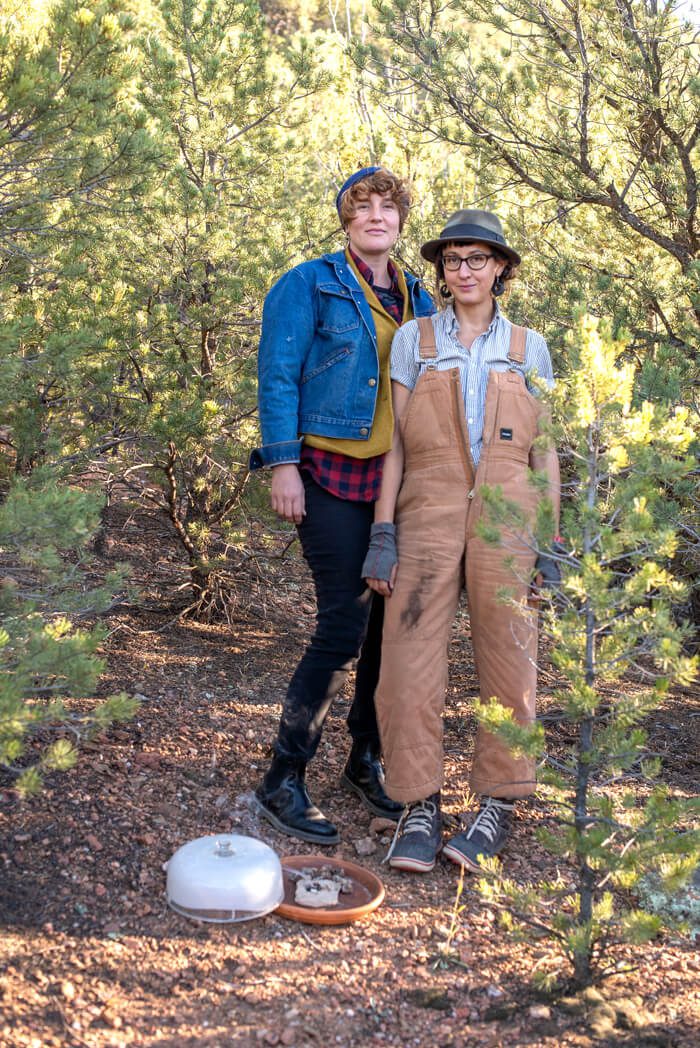
Robin Moore and Cebastien Rose, Dryland Wilds
Together, partners Robin Moore and Cebastien Rose capture the scents of New Mexico in perfumes, lotions, soaps, and other products made with foraged ingredients, like piñon, snakeweed, sage, and rosehips. They also lead regular foraging walks and workshops to educate the public about the edible and medicinal plants they use and how to safely and responsibly harvest them.
How did you start Dryland Wilds?
Robin Moore: We used to farm, so what we’ve done for a long time has revolved around the seasons and the land. Some time ago, we made a list of everything we loved to do, and that kind of became our business plan. We were originally going to do food and skincare, but it became too much. But we still have that [food] component with our foraging workshops.
Tell me about the foraging workshops you lead.
Cebastien Rose: This business is more than just making cool skin-care products; it’s also the larger context of what we’ve been talking about [place-based knowledge]. When you go out and understand “ok, this tastes good, this doesn’t; this is good for skin care, this isn’t,” you feel so much more connected to the land. It’s also about deepening that connection and responsibility with the land.
RM: If you go back to the same spot to harvest rose hips every year, you notice when the patch is weaker, when poison has been dumped, because it affects you! Like, “Hey, that was going to be my jelly!”
What’s your favorite part of this work?
CR: Watching people cry when they smell the piñon soliflore. Recognizing that that’s how people connect to place—through our sense of smell.
RM: Our sense of smell is so tied to memory and emotion. A lot of people from New Mexico now living out of state say that our scents remind them of home.
View more images of Dryland Wilds here.
